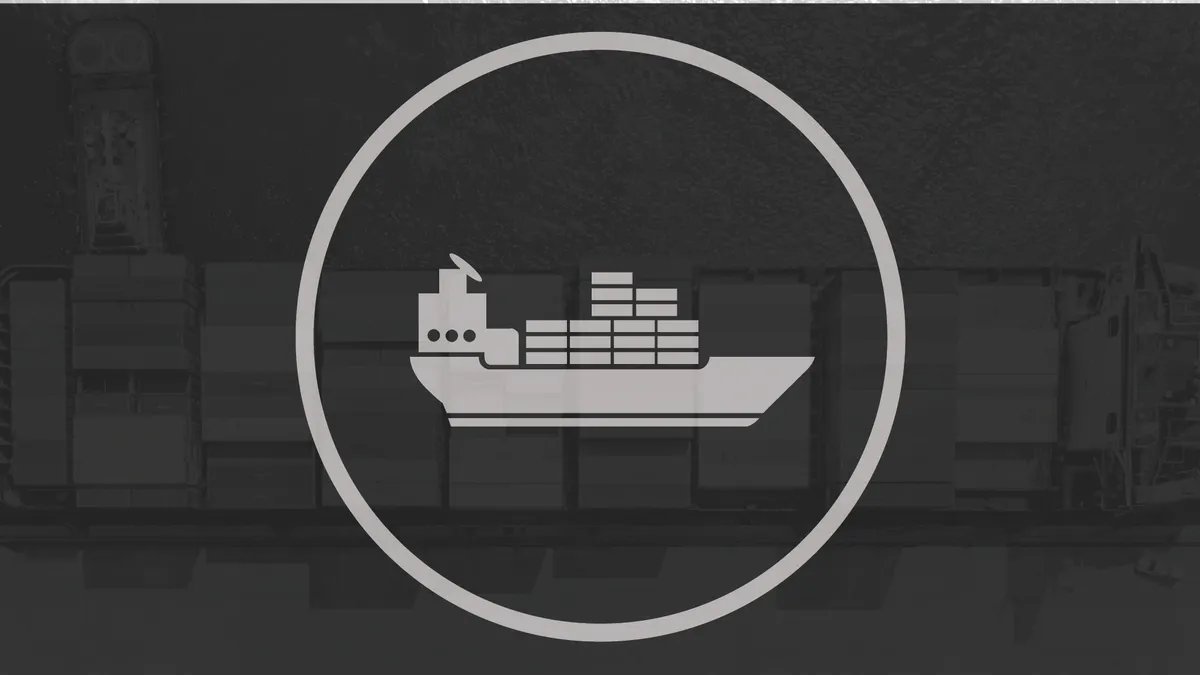Dive Brief:
- Ports across the country — including the California ports in Los Angeles, Long Beach and Oakland, as well as the Port of Virginia — experienced import volume in August that was higher that the same month last year, as retailers prepare for the holiday season and refill inventory after decreasing procurement in the early stages of the pandemic.
- Import volume at the Port of Los Angeles grew 18% YoY in August, Long Beach saw a 13% YoY uptick, Oakland was up almost 9% YoY and the Port of Virginia's imports were up less than 1%.
- "With all of this, a word of caution," Port of Los Angeles Executive Director Gene Seroka said in a Tuesday press conference. "One month or even one quarter does not make a trend. Despite this import surge that we're seeing, the U.S. economy and global trade face significant challenges. Cargo volume remains down nearly 12% year on year through August; the trade imbalance has deepened with American exports continuing to struggle. In my view, our economy remains in a very precarious position."
Dive Insight:
Overall August volume at U.S. ports was up 5.9% YoY and set an all-time record for U.S. port volume by surpassing 2.7 million TEUs for the first time, according to data from Panjiva.
"That was largely down to a 14.3% surge in shipments from China while imports from Asia ex-China increased by a more modest 4.0%," Panjiva wrote in a research note. "Much of the recovery has been driven by consumer goods in the wake of COVID-19 with discretionary product imports up by 16.1% and staples rising by 34.9% on stronger food and personal care shipments."
The demand for ocean cargo has led to high rates, a lack of capacity and freight procurement headaches for shippers. As a result, the Chinese government reportedly requested that carriers not increase China-to-U.S. spot rates again. The U.S. Federal Maritime Commission also discussed spot rates in a non-public meeting this week, the agency said in a press release.
"Specifically, the Commission received detailed reports that addressed trends in spot rates, longer term service contracts, utilization of equipment, blanked sailings, revenue trends, the policies of individual carriers and global alliances for service changes, and what notice must be provided to the FMC when there are blanked, canceled, or amended voyages," the FMC wrote in its release.
The FMC said it could seek injunctions against carriers if necessary.
High import volume is expected to continue going into September. The turnaround from the volume trough experienced through much of the spring and summer was enough for the Port of Los Angeles to revise its 2020 volume forecast upward. The port had forecast 7.9 million TEUs of cargo movement for the year in the early stages of the pandemic, but now the gateway expects to handle around 8.5 million TEUs, Seroka said. The increased forecast is still lower than the previous four years of cargo volume.
Beyond September, though, there is less clarity on what volume might look like.
"This month-on-month growth should continue through September, but it is hard to predict what volumes will look like in late fall," Virginia Port Authority CEO John F. Reinhart said in a statement. "What is important is that there are fewer blank sailings, we have new services coming online and some extra loaders (vessels) to handle the increasing cargo will be announced. The number of loaded import containers is also growing, and these are all good signs."
A downward trend heading into the last quarter of the year is expected, though, because the industry is currently in peak season. Still, the next six months are expected to be stronger than the previous six months, National Retail Federation VP for Supply Chain and Customs Policy Jonathan Gold said during the Port of Los Angeles' press conference.
"I think there's still a lot of uncertainty, though," Gold said. "Looking toward the end of the fourth quarter and to early 2021 ... retailers are trying to plan against the ongoing uncertainty of where we are, where we'll be with COVID recovery and things like that. It's tough to plan against the uncertainty."
Blank sailings for this year's Gold Week, the first year in October, are currently slated to be higher than the average for 2014 through 2019, according to a forecast from Sea-Intelligence.














